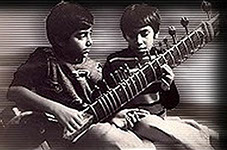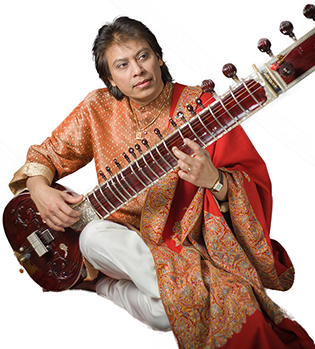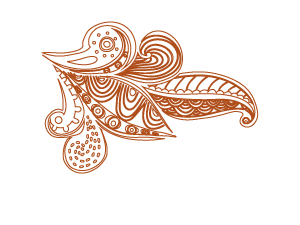






“His presence added a sense of history…”
“A master of the sitar…”
- The Star Herald, USA
“…Indian music at its top level…”
“Mr. Khan’s sitar and tabla magic…was barely stoppable.”
- The Stroestring in Pacem, USA
“...star in the world of classical music…”
“…the thunderous ovation never ceased throughout his performance…”
- The Chandigarh Tribune, INDIA
“Virtuoso…Classical purity…Astonishing individuality…”
“…intellectual and poetic…”
“Creator as well as performer…”
- Washington Post, USA
“…the rhythmic complexity of the music…enthralled the audience.”
- Cork Examiner, IRELAND
“The tabla…was absolutely superb.”
“…evoked spontaneous applause…”
- The Times, LONDON
“…lively performance…skillfully manages to steal the audience’s attention…”
- Bangladesh Observer
Shafaat frets a sitar during practice while elder brother Wajahat simultaneously plucks.

The sitar owes its origin to Amir Khusro (1234-1324), the first great Muslim musicologist of India. The instrument’s name is derived from the Persian ‘setar’, or three-stringed. It belongs to the lute family and is made from a seasoned gourd, which acts as a resonating chamber, and teakwood. There are six or seven main strings (four of which are played and two or three used as drone and rhythm strings) and up to thirteen sympathetic strings, the two sets being carried on separate bridges. Twenty frets made of brass and tied to the long hollow neck with string can easily be moved in order to conform to the scale of a particular raga. The main strings, which are tuned, are plucked with a mizrab, plectrum, worn on the index finger of the right hand.
Instrument
Instrument: the sitar
The sympathetic strings are also tuned and usually vibrate to the sound of the main strings. They are, however, plucked on occasion by the little finger of the right hand inserted between the main strings. Perhaps the most distinctive and important technical element involves pulling the strings sideways, thereby making the sitar capable of reproducing the slides and other graces of vocal music which are the very heart of Indian music. Sitars are of varying sizes, and some have an extra gourd at the end of the neck. The most popular stringed instrument among Hindustani musicians, the sitar is also the best known Indian instrument abroad.

With each instrument, assiduous practice is necessary in order to develop the strength and technique to control the intonation and quality of the notes produced from them. Mastership over any instrument requires years of intensive and continuous practice (riyaz) and training (talim). This is a lifelong process for the true Ustads and Pandits.
